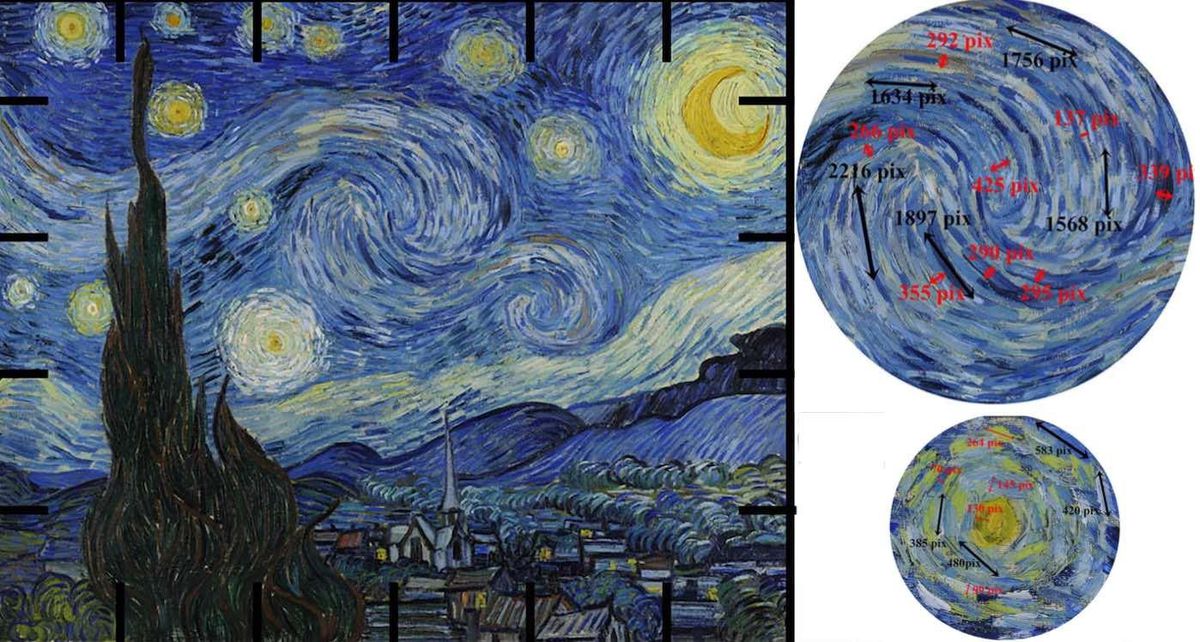Van Gogh's 'Starry Night' is not just beloved for its aesthetic charm; it is now recognized for its surprising scientific accuracy. A recent study published by physicists from China and France indicates this iconic painting contains elements of turbulence, blending art and science in unexpected harmony.
Painted in 1889 during Van Gogh’s stay at the asylum of Saint-Rémy-de-Provence, the artwork features swirling skies filled with bright stars. It’s often thought to be reflective of the disarray within Van Gogh's troubled psyche at the time. Yet, the new analysis suggests the artist had more than just intuition at play; he might have possessed an innate grasp of the logical structures underlying turbulent flows.
Turbulence, as it is understood today, is observed everywhere—from flowing rivers to storm clouds. It is characterized by chaotic changes and swirling patterns, which might seem random but actually adhere to underlying physical laws, particularly those articulated by mathematician Kolmogorov. Think about watching eddies swirling on the surface of water: there’s pattern within the chaos, governed by our universe’s physics.
Researchers, led by Yongxiang Huang from Xiamen University, studied high-resolution images of the painting to analyze the pattern and scale of its brush strokes. They aimed to see if these visual swirls corresponded with theoretical models of turbulence. Their findings revealed remarkable similarities between Van Gogh’s painted whirls and the complex patterns described by turbulence theory.
Using advanced techniques, the scientists measured key characteristics of 14 swirling shapes within the artwork, focusing on the relative size and distance of these shapes. They discovered these dimensions aligned closely with Kolmogorov's principles of energy transfer, demonstrating remarkably accurate mimicry of atmospheric dynamics.
Another layer of complexity surfaced when the researchers examined the subtle variations of brightness across the painting. These fluctuations suggest the brush strokes not only represent turbulent air but also the kinetic energy inherent to atmospheric movements. By quantifying luminance, they linked Van Gogh's artistic expression directly to the energy dynamics of real-life turbulent phenomena.
The controversy surrounding artistic interpretation and scientific explanations continues to fuel discussions about Van Gogh’s work. Many people regard the colors, motion, and overall expression as stemming from his emotional struggles—after all, he famously battled mental illness. Yet, what if his work was also influenced by observational learning of his natural surroundings? What if he was unwittingly applying rudimentary concepts of physics to his art without formal training?
Despite this scientific intrigue, it’s important to appreciate Van Gogh's painting remains at its core, fundamentally art. While the recent findings add depth to our comprehension of 'The Starry Night,' they don’t diminish its emotional power or aesthetic value. The painting remains one of the most cherished works on the planet, inspiring generations with its beauty and depth.
What makes this study particularly fascinating is how it crosses the boundary between disciplines. Scientists are continuously attempting to apply mathematical frameworks to phenomena found across nature; doing so offers new lenses through which we might interpret both nature and artistic endeavor. Van Gogh may have captured the essence of atmospheric turbulence without ever having observed turbulence theory. His artistry resonates long after his life ended; it enchants audiences and intrigues scientists alike.
To put it plainly, this analysis doesn’t just make Van Gogh’s work more intellectually compelling; it poses questions about how we view the intersection of art and science. How often do we overlook the potential of artistic expression to convey complex concepts embedded deeply within our natural world? How much could we learn about our environment through the eyes of those willing to portray it creatively and emotionally?
With multiple aspects of the analysis revolving around the application of turbulence principles, the research emphasizes the importance of interdisciplinary studies. It bridges the gap between scientific inquiry and human emotional experience; two realms seen as distinct yet fundamentally interlinked. Whether one prefers the visual splendor of Van Gogh’s work or the technical marvel of fluid dynamics, this intersection invites appreciation from both sides.
Art can often serve as the doorway to intellectual exploration. This new perspective on 'The Starry Night' unveils not just the beauty of the night sky but also the universal laws governing its behavior—a visual ode to the complexity of turbulence and nature’s eternal dance.
What does this mean for future explorations of art? Will it encourage more scientists to closely analyze the works of historic artists? Will artists be inspired to observe their environments more critically, encouraging interdisciplinary collaboration? If anything, the confluence of turbulence theory and visual art as perpetuated by Van Gogh's masterpiece serves to inspire the next generation of thinkers.
Art helps humans to marvel at the emotional experiences of life, whereas science seeks to understand the intricacies of the universe. Together, these fields can illuminate paths less traveled, encouraging individuals to explore creativity and reason hand-in-hand. Van Gogh’s legacy continues this conversation, challenging us to think differently about our surroundings, and offering glimpses of physics reflected through the vibrant colors of imagination.




